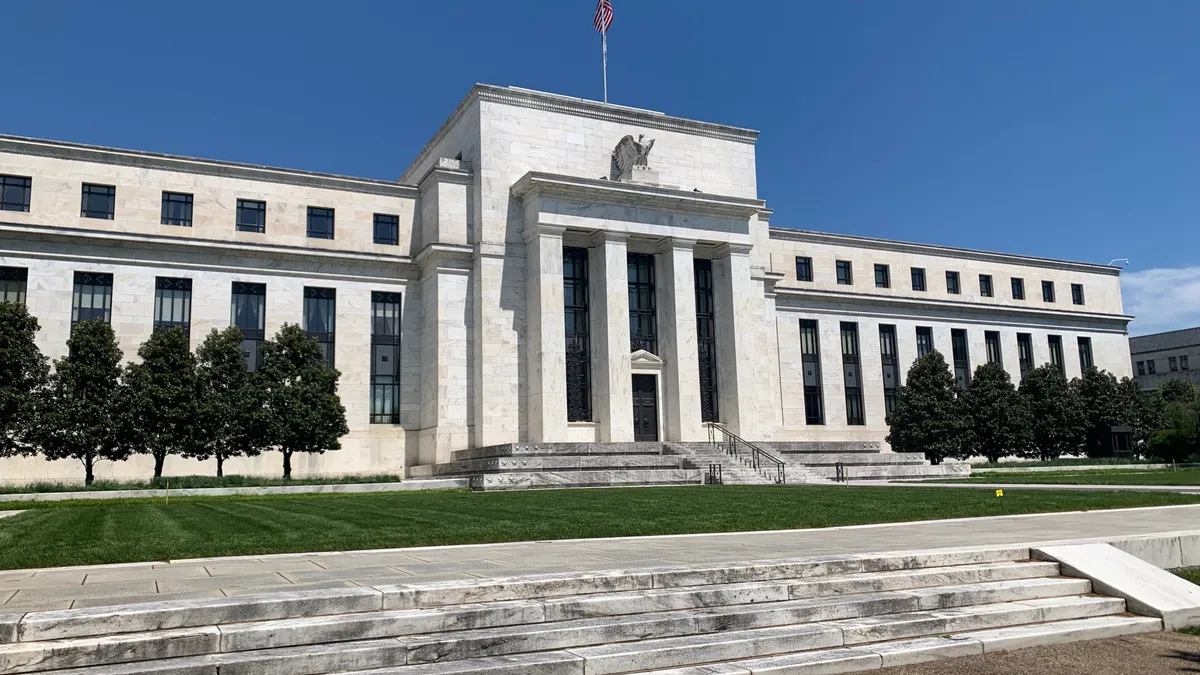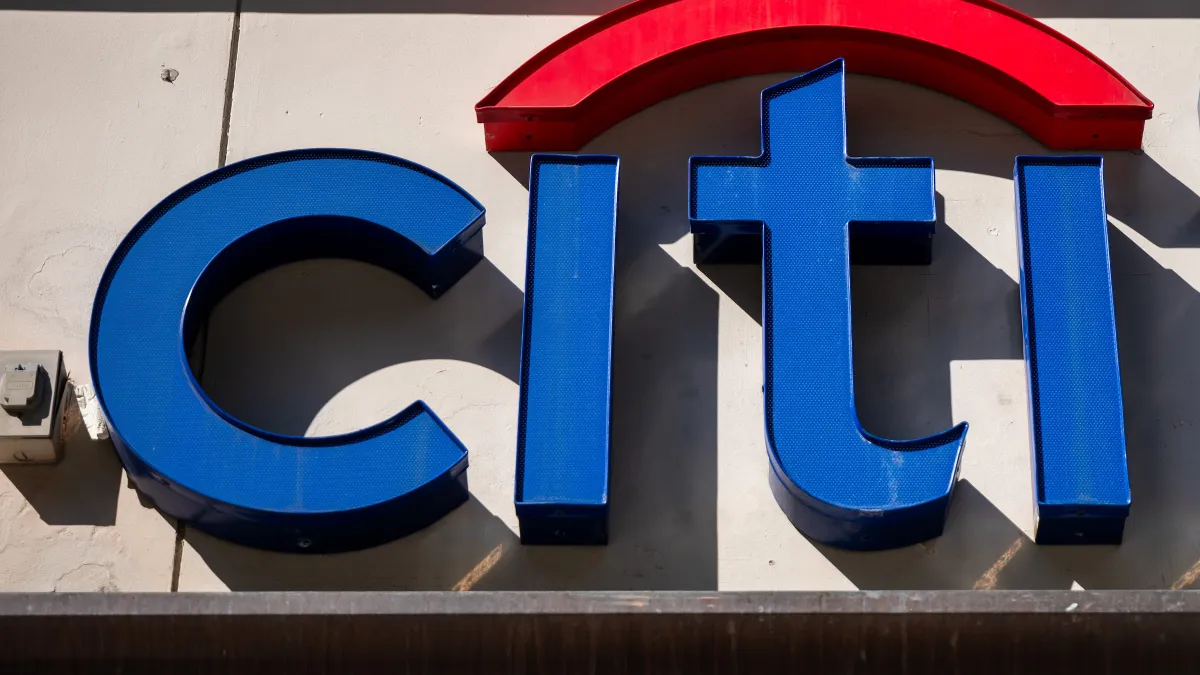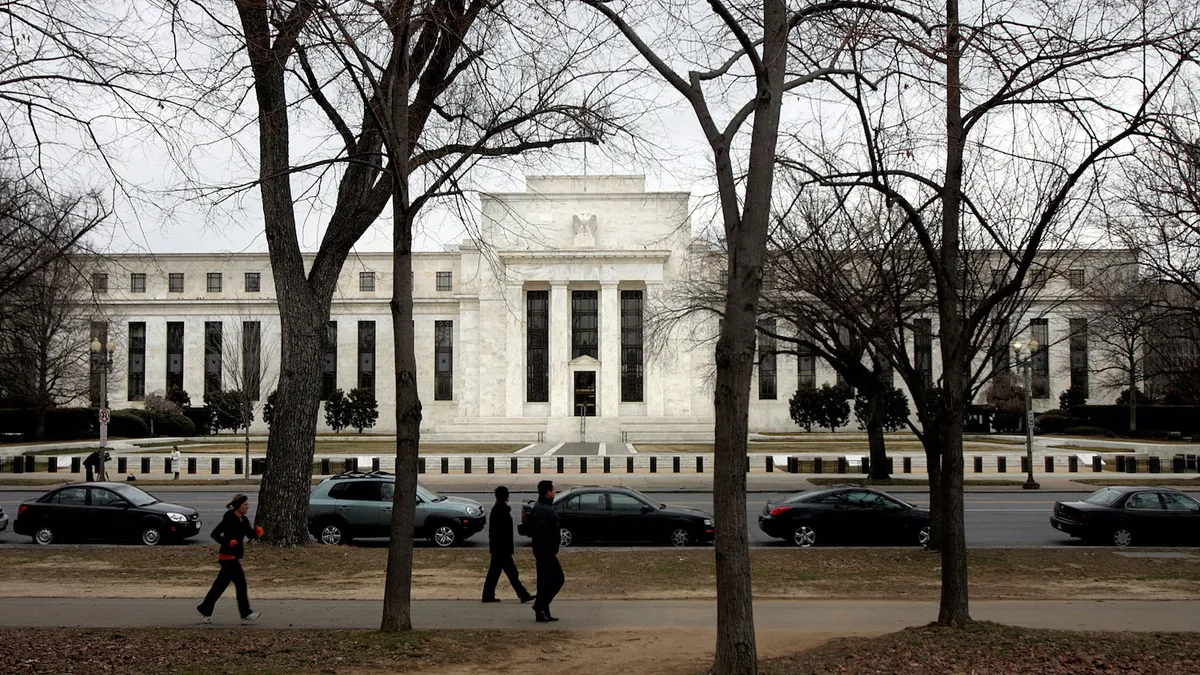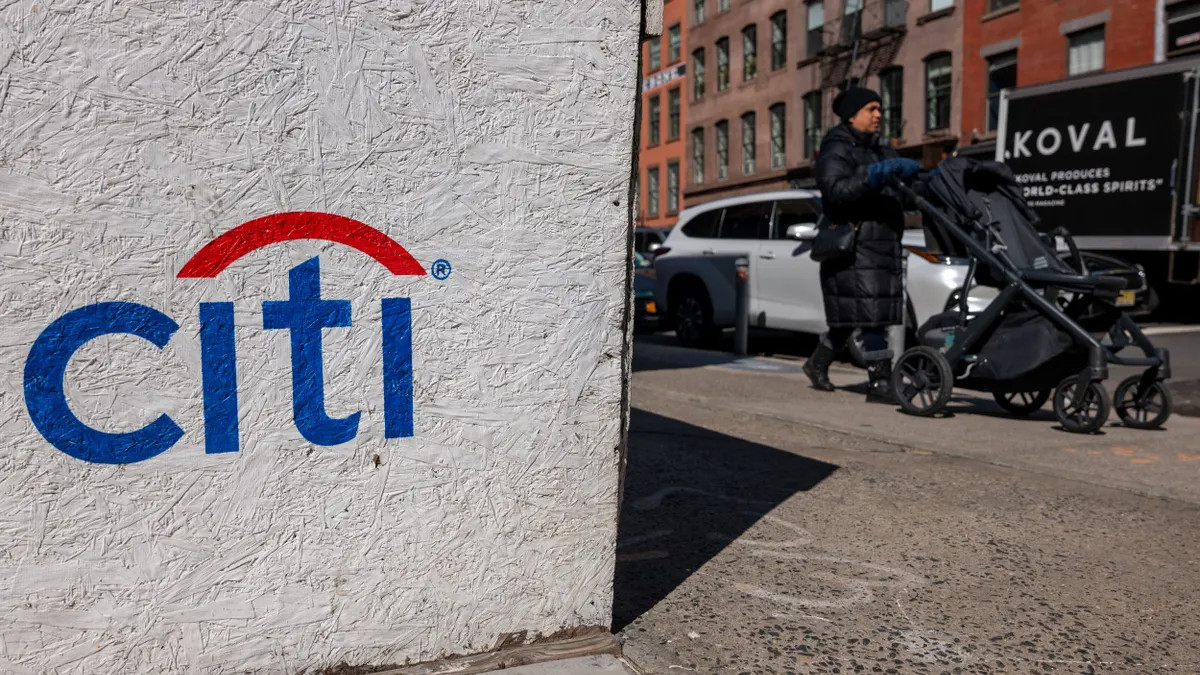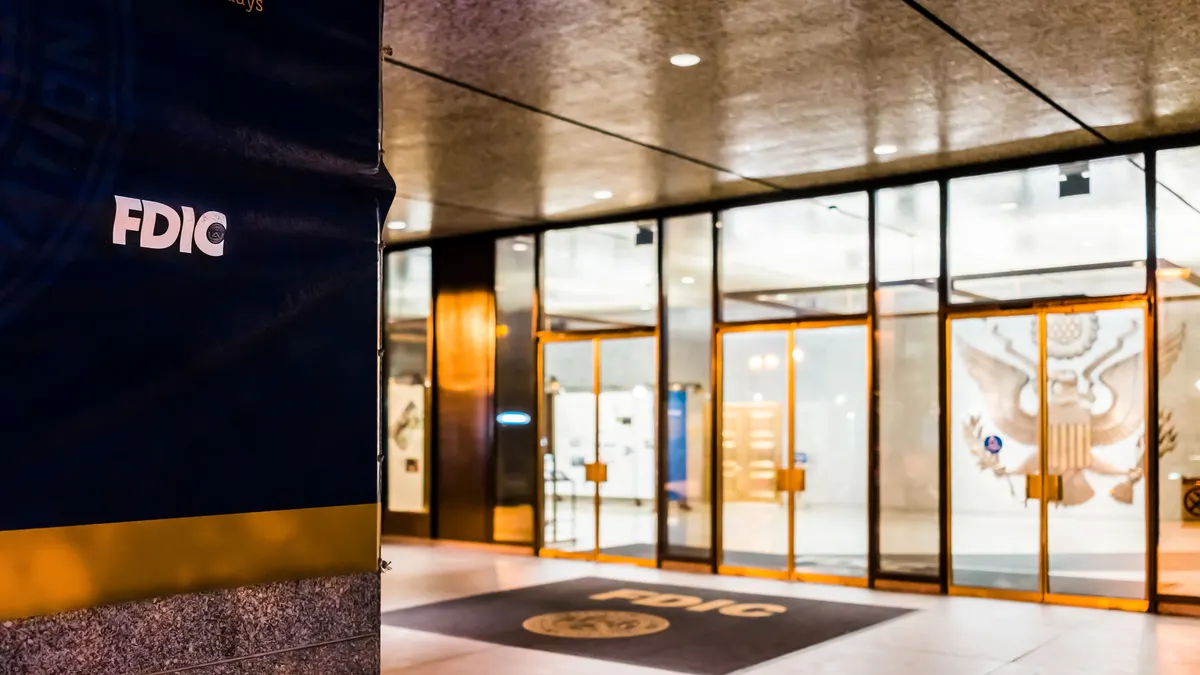If you need proof that 2020 is anything but ordinary, consider: The Federal Reserve's projection that it won't raise interest rates through at least the end of 2023 may be the least newsy narrative involving the regulator this week. Here are four additional stories that will be worth some attention in the coming days.
1. Midcycle stress test.
For the first time, the Fed is subjecting 34 lenders to a second stress test within a calendar year. The regulator published two hypothetical scenarios Thursday against which it will measure banks' resilience.
The "severely adverse" scenario assumes an unemployment rate that peaks at 12.5% at the end of 2021 and declines to 7.5%. It also features a sharp slowdown abroad and considers a 3% drop in gross domestic product (GDP) from now until the end of 2021.
The "alternative severe" scenario supposes an unemployment rate that peaks at 11% by the end of this year, declines to 9% and considers a 2.5% slip in the GDP through the end of 2020.
Banks with large trading operations will also face a global market shock component that factors in the default of their largest counterparty. Banks with substantial processing operations must consider the default of their largest counterparty.
The severity of each scenario far outpaces the Fed's actual projections, which predict unemployment will drop to 5.5% by the end of 2021, and to 4% by the end of 2023, according to the Financial Times.
The Fed intends to release results of the second stress tests by the end of the year — this time making public the outcome for individual banks, which would give investors a better idea of the health of particular lenders. The Fed also asked the lenders to resubmit their capital plans this fall to reflect a more current economic picture.
"Although the economy has improved materially over the last quarter, uncertainty over the course of the next few quarters remains unusually high, and these two additional tests will provide more information on the resiliency of large banks," Randal Quarles, the central bank's vice chair of supervision, said Thursday in a press release.
The Fed's June stress test was based significantly on financial data from the end of 2019. As the coronavirus pandemic worsened, the regulator added a "sensitivity analysis" that tested a V-shaped economic recovery, where growth falls sharply and then rebounds; a U-shaped recovery, "in which only a small share of lost output and employment is regained in 2020"; and a double-dip W that assumes "a short-lived recovery followed by a severe drop in activity later this year due to a second wave of containment measures," Quarles said.
All 34 lenders maintained the minimum capital requirements under the June tests, but "several would approach minimum capital levels" under a U-shaped or W-shaped recovery, the Fed said.
2. A refreshed look at dividends and share buybacks.
The Fed said it will announce by the end of the month whether it will extend its ban on share buybacks and its cap on dividend payouts. Bank dividends are now limited to the level paid out during the second quarter. Both restrictions are set to expire Sept. 30.
JPMorgan Chase CFO Jennifer Piepszak said this week her bank has excess capital and may use it to buy back shares in the next quarter, if the Fed allows.
"It will obviously depend on whether we have regulatory constraints, and we're going to be very, very prudent in terms of how we think about the number of different scenarios and what our capital looks like under those scenarios," she said, according to Bloomberg.
The Federal Reserve Board has been divided this year over dividends. Gov. Lael Brainard in June called for the payouts to be halted altogether, saying she could not support a policy that "fails to learn a key lesson of the financial crisis."
"I do not support giving the green light for large banks to deplete capital, which raises the risk they will need to tighten credit or rebuild capital during the recovery," she wrote.
European regulators have urged banks there to suspend dividends this year. Former FDIC Chair Sheila Bair has pushed for American banks to do likewise.
3. Revisiting the Community Reinvestment Act.
The Fed is set to meet Monday to discuss an "advance notice of proposed rulemaking" in an indication it has its own plans to revamp the 1977 anti-redlining law. Regulators had been divided over updates to the Community Reinvestment Act (CRA) for months. Although the Office of the Comptroller of the Currency (OCC) and the Federal Deposit Insurance Corp. (FDIC) released their own suggestions in December, the Fed didn't sign on.
"If the past is any guide, major updates to the CRA regulations happen once every few decades. So it is much more important to get reform right than to do it quickly," Brainard said in January.
In particular, she objected that the other regulators' plan combined several aspects of CRA evaluation into one score based in part on the dollar value of projects that fall under the act's purview.
The OCC was again castigated in May for the speed with which it turned around a final rule to revise the CRA — shortly before then-OCC chief Joseph Otting announced his resignation. Neither the FDIC nor the Fed supported the OCC’s final rule.
Brainard is set to speak Monday at an event with the Urban Institute and take questions about the Fed's plan to revamp the CRA.
4. Main Street changes.
Fed Chair Jerome Powell said the central bank is considering making changes to the Main Street Lending Program available, but the law limits how much more risk the regulator can assume, American Banker reported.
Lawmakers and experts last week suggested the Fed buy 100% of Main Street loans from banks — rather than leaving banks on the hook for 5% — to boost participation in the program.
"Lenders are concerned about the underwriting expectations," Powell said Wednesday at a press conference after a meeting of the Federal Open Market Committee, according to American Banker. "So, banks, their approach is likely to be that they're going to underwrite this loan roughly the same as they underwrite any loan — they’re keeping part of it."
The Fed "will be making some changes in that respect," he said.
About $2 billion in Main Street loans have been issued out of $600 billion designated for the program, Powell said Wednesday.


